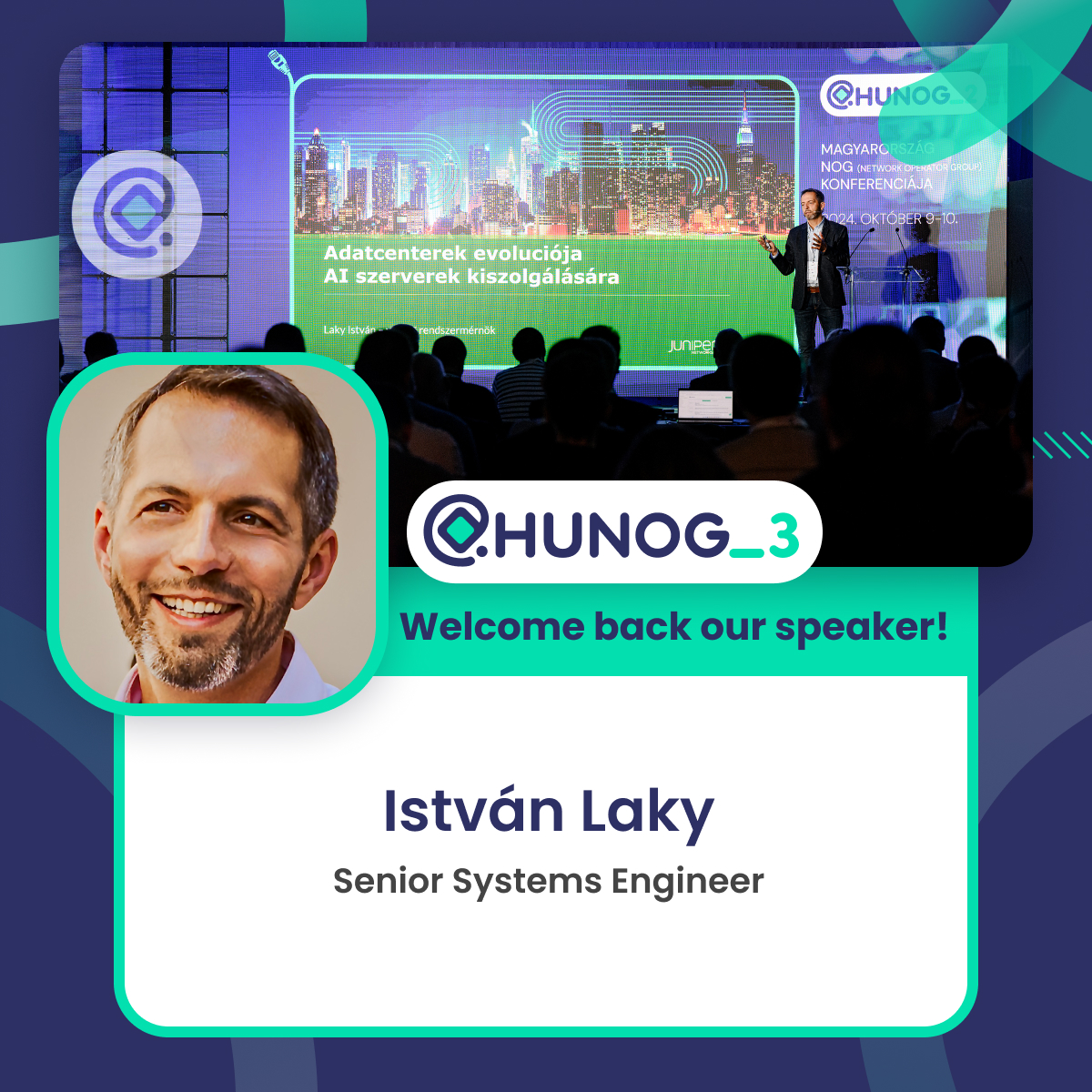
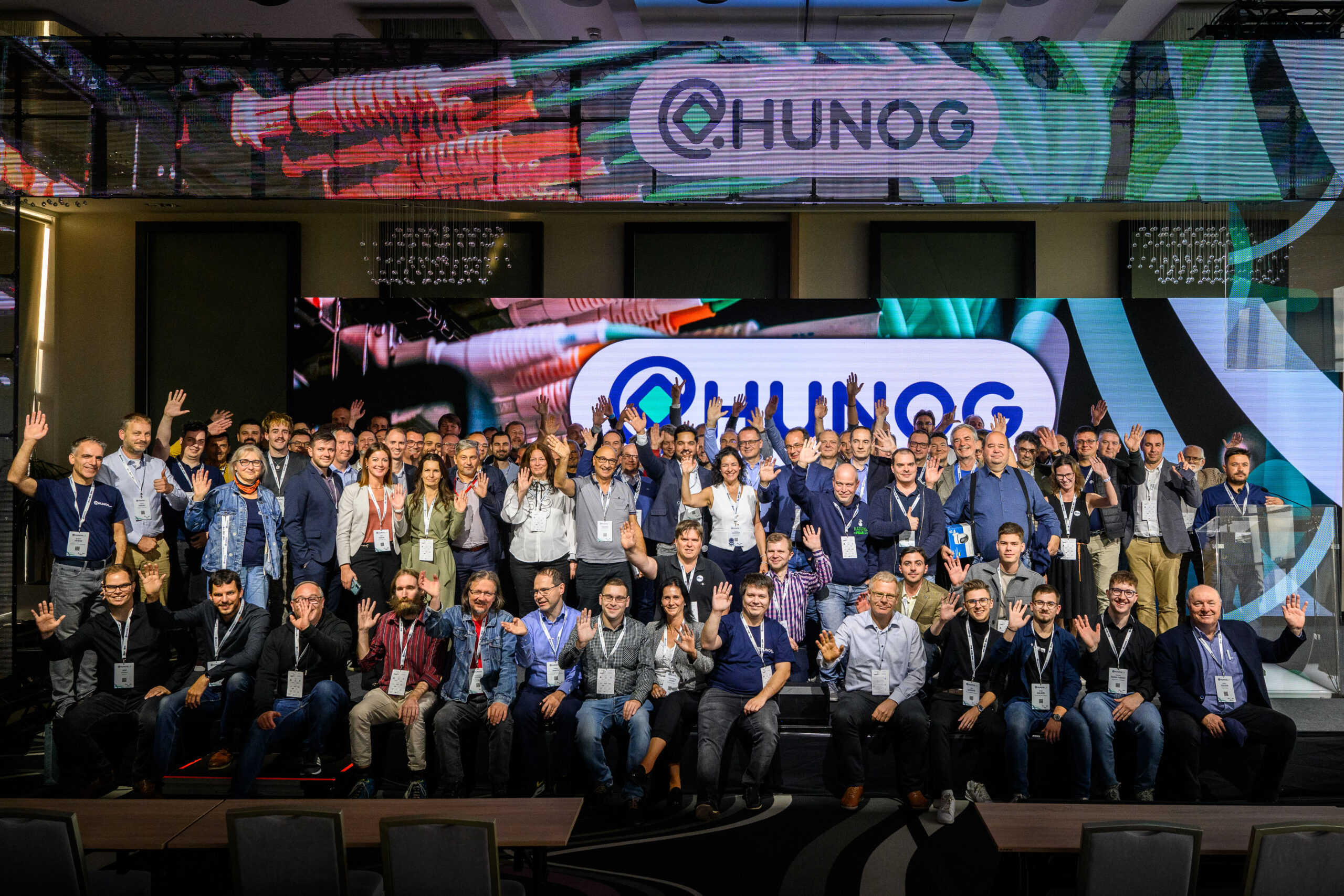
On October 1–2, 2025, the network-operations community gathered for the third time at HUNOG, Hungary’s only NOG (Network Operator Group) conference. Everything scaled up at HUNOG_3—the vibe, the headcount, and even the elevation. The event once again outgrew its previous venue, so this year it took place atop the Mátra at Hotel Ózon & Luxury Villas **** superior, where attendees could chat between talks while looking out over the autumn landscape.
This year’s organizers were again ISZT (Council of Hungarian Internet Providers), the .HU Registry and BIX, the Budapest Internet Exchange.
In his opening remarks, Attila Miszori, President of ISZT, emphasized that the goal is no longer to chase headcount, but to deepen the professional substance. This year, 280 participants and 117 companies took part in the conference, with supporters and speakers arriving from no fewer than 12 countries; students and lecturers also joined from 8 universities. Miszori highlighted the work of the Program Committee that curated the agenda; thanks to them, the talks—true to the slogan “no fluff discussions on network”—reflect a rigorously professional approach.
Once again, the moderator was Dr. Pál VargaHead of the Department of Telecommunications and Artificial Intelligence at the Budapest University of Technology and Economics (BME).
Barbara Angelus (.HU Registry) focused her welcome on community building as a core goal. In her view, the real content of the conference comes from its participants: now is the time to turn names and email addresses into faces and relationships. She also noted that on day two a dedicated Registrar section awaits domain Registrars, to which representatives of four neighboring countries—the Slovak, Czech, Serbian, and Romanian Registries—accepted the invitation to share their experiences.
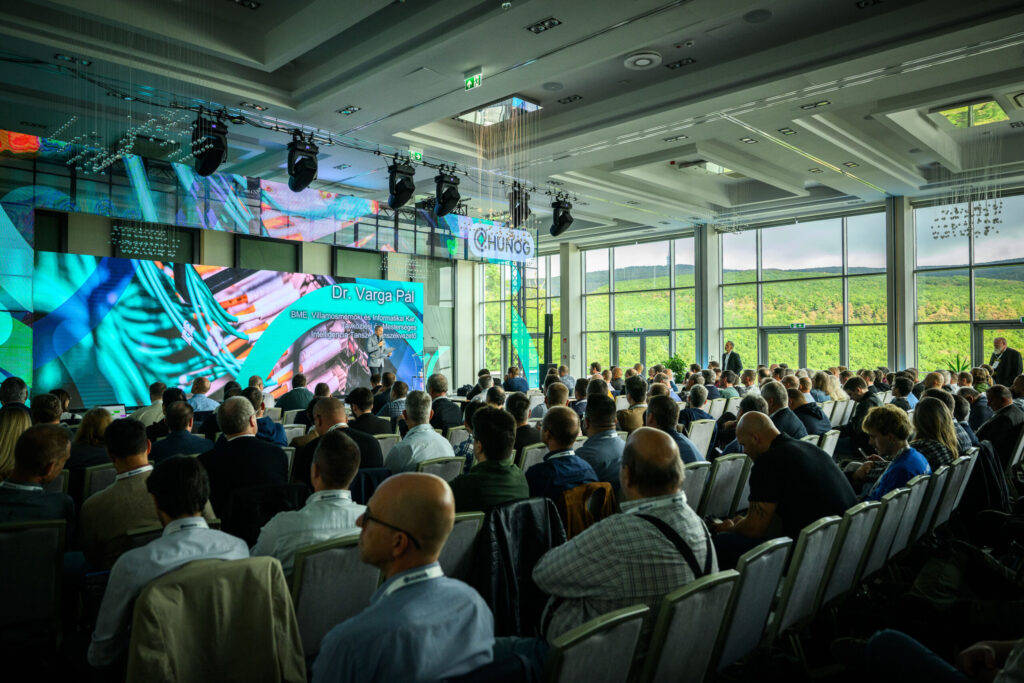
The technical block opened with István Laky (Juniper Networks), who spoke about the practical challenges of AI data-center infrastructure. He stressed that these are not futuristic visions: optimization, scalability, and Ethernet-based standardized solutions are actively shaping data centers today.
Gergely Ács (BME CrySyS Lab) took the audience into the world of vulnerabilities in language models and agents: prompt injection, jailbreaking, multilingual attacks, and the ongoing arms race of defensive methods. The “Calendar attack” example against Google Gemini was particularly striking, showing how seemingly banal channels can be exploited to launch serious attacks.
Ernő Rigó (HunCERT / HUN-REN / SZTAKI) presented how to build federated Security Operations Centers on open-source foundations with a practical, modular approach—aiming to enable sustainable, community-driven incident response even for smaller organizations.
The block concluded with Kamilló Matek (Gammaorg), who spoke with bracing candor about the reality of vulnerabilities lurking inside devices. In his view, security is not a state but a process, and the cracks are often visible right out of the box—if someone is willing to truly look.
Running parallel to the plenaries, the Tech Demo Xperience in the Hidas room offered interactive, hands-on demos. Dr. Viktor Kilbertus (TP-Link Networks Hungary) showcased remotely managed camera systems and operator-grade management platforms; Zoltán Bibity (Arista Networks) presented Arista’s CloudVision management and automation tooling with real-time telemetry; and Dr. Richárd Ádám Vécsey covered practical applications of large language models. Attendees got a simultaneous taste of network operations, cloud management, and artificial intelligence.
The cybersecurity panel— Kamilló Matek (Gammaorg), Prof. Dr. László Kovács (NKE), Tamás Marsi (NBSZ NKI) és Zoltán Seprényi (CETIN)—discussed how to keep pace with an accelerating threat landscape. The starting point was sobering: in Hungary, even basic alerts often go unread, and system maintenance is frequently neglected. Seprényi reminded everyone that defense doesn’t begin with futuristic tools but with tried-and-true fundamentals: if security holes remain open, the rest is just hand-waving.
The conversation quickly zeroed in on AI, which brings new opportunities while introducing fresh vulnerabilities. According to Matek new systems have become a “playground” for attackers because development is fast while defense lags behind. Marsi pointed out that AI on the attacker’s side has drastically lowered the required skill level, even as defenders face increasingly complex situations. Kovács added that most attacks don’t start with a genius hack but with simple reconnaissance—looking for the easiest human targets to exploit.
The common denominator was clear: security is grounded in a conscious organizational culture, sound policy, and education. Marsi argued that cybersecurity is a trust-based community activity, yet incidents are seldom shared in Hungary, so lessons often never reach others. In Kovács 's view, AI could become an important defensive tool, but organizations need time and patience to prepare. Until then, at least get the basics right: let’s finally lock the doors.
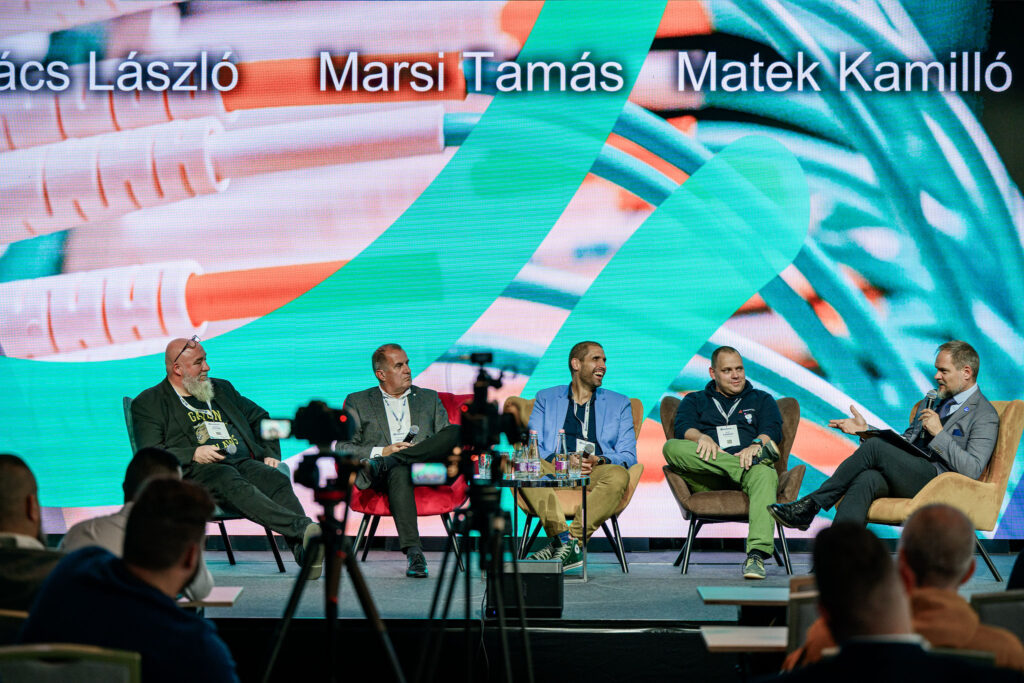
The data-center and optical-networks track was one of the most technical blocks of the day, yet the depth didn’t come at the expense of momentum. Dániel Rétsán (Magyar Telekom) spoke about the dual challenge facing data-center networks: simplifying architectures while giving ever more weight to sustainability. New optical technologies help on both fronts—offering higher capacity and lower energy use while reducing network complexity. This is not just a technical issue but a strategic one: the future of network architectures lies in simplicity and efficiency.
Thomas Weible (Flexoptix) examined the reliability of ultra-high-speed data transmission up to 800G—peering into the near future. While high capacity is promising, stability and error handling become ever more sensitive; the smallest disturbance can have a disproportionately large impact on the entire system.
Closing the block, Gordon Gidófalvy (Nokia) presented modern, Containerlab-based network labs, followed by Tamás Tóthfalusi (AITIA) on collective-intelligence-based network analytics that enables real-time, quasi-conversational interrogation of 5G networks. Together, the talks mapped a trend: infrastructure will not only be faster and greener, but also more flexible and interactive—where the boundary between humans and networks gradually blurs.
The day ended with a cheerful community dinner featuring a quiz, prizes, and a pálinka tasting—judging by the late-night conversations among long-time partners and colleagues, a resounding success.
Day two featured a dedicated section for .HU Registrars. In his opening talk, Csaba Bodor (ISZT Nonprofit Ltd., Managing Director) summarized updates and plans related to the .hu domain.
Bodor highlighted that in recent years the focus was on the migration from the legacy DRR (domain registration) system to the new ngDRR. The needs gathered from Registrars and domain users during this period are now captured in a well-documented “idea bank,” which can become strategic input going forward.
Accordingly, drafting the Registry’s new three-year strategy is entering a fresh phase. While the framework is set by the Mission Document adopted at the latest general assembly, Registrars will be actively involved in finalizing the strategy: they won’t just comment on the goals, but can make concrete proposals and vote on the future direction of the .hu ecosystem. This underscores that the Registry will continue to build on partnership rather than act solely as a regulator.
Talks in the Registrar section quickly sketched out the region’s experiences. Peter Biro (SK-NIC, .sk) shared inspiring customer-service and CSR initiatives from the Slovak domain-registration system, showing how TLD operation can also build community. Zdeněk Brůna (CZ-NIC, .cz) offered a look into the practical workings of the Czech domain-auction model, which helps reallocate released domains transparently and efficiently. The technical front was closed by Zoltán Lajber (.HU Registry) and Tamás Csillag (PCH – .HU Registry) with presentations on DNSSEC, highlighting the protocol’s status in Hungary and current challenges.
The subsequent panel was a first in Hungary: for the first time, representatives of five regional Registries sat at one table to share experiences of implementing NIS2. The discussion made clear how different their situations are: in Slovakia the shift to the new regulation had to happen almost overnight; Serbia (not an EU member) has more time to prepare and learn from others; Romania implemented needed changes within weeks; while the Czech Republic is also battling tight deadlines.
Debate was especially lively around contact verification, where each country applies a different approach—an excellent example of the value created when regional players not only work side by side but also talk to each other.
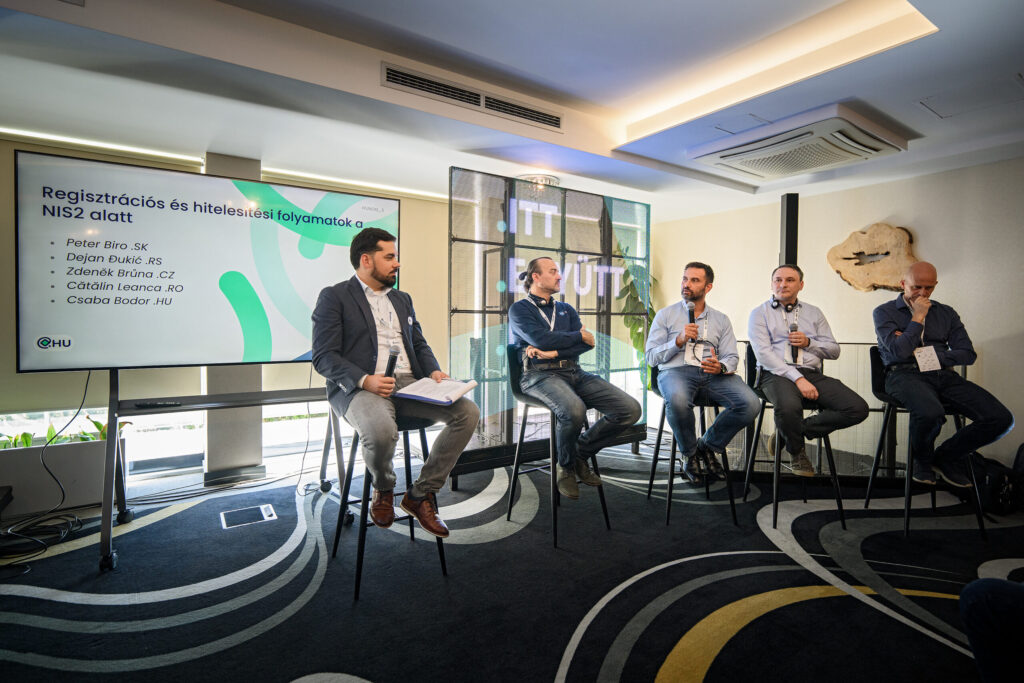
Meanwhile in the plenary hall, the morning focused on access technologies and troubleshooting across a notably wide technological spectrum. Ivo Lansky (Tarana Wireless) spoke about bridging Hungary’s digital divide, emphasizing that real progress requires technology-neutral broadband policies—not forcing “favorite solutions,” but supporting the infrastructures that work best.
Jan Stejskal (VanCo.cz) presented practical applications of microwave technologies, underscoring their continued importance in network build-outs, especially in hard-to-serve areas. István Bátori (Ericsson) discussed automation in mobile networks, focusing on the ORAN R1 interface as a potential key element of tomorrow’s radio networks. The sequence closed with András Czinkóczky (Magyar Telekom), who demonstrated model-based troubleshooting methods to diagnose problems in complex telecom networks faster and more precisely.
The AI and network-management track explored how AI is reshaping both technological infrastructure and our ways of thinking. Bálint Gyires-Tóth (BME) guided the audience through modern GPU infrastructures, showing how to scale diverse AI architectures effectively by combining hardware and software solutions.
Orsolya Putz (BME) approached from another angle: the behavioral and cognitive biases of AI—how the flaws of human thinking surface in large language models, and why this matters if we take AI-based systems seriously.
Finally, Dr. Richárd Ádám Vécsey spoke from a practical perspective about AI’s role in network operations. He pointed out that the technology already helps significantly with fault detection, optimization, and predictive analytics, but a real breakthrough also requires cultural and organizational adaptation.
In “The Invisible Side of DNS” session, speakers illuminated the less visible yet critical layers of network operation. Tomáš Hála (CZ-NIC) shared the secrets of energy-efficient, cost-effective DNS operation; Robert Kisteleki (RIPE NCC) explained how to uncover the background of problematic Internet events when something breaks; Tamás Csillag (PCH – .HU Registry) presented developments in .hu zone generation and DNSSEC signing; and Zoltán Lajber (.HU Registry) offered hands-on advice on how DNS should—and should not—be run.
In the AI and network-management panel, multiple perspectives explored how AI is transforming workflows and infrastructure. István Laky (Juniper Networks) noted that most customers don’t use AI to cut headcount, but to offload repetitive tasks—freeing experts to focus on higher-value work while making systems more stable.
György Gaszmann (CETIN Hungary) argued the change is as much about mindset as technology: with AI, teams work faster and discover deeper patterns in networks. Dr. Balázs Harangi, deputy head of department and vice-dean for science and grants at the University of Debrecen’s Faculty of Informatics, highlighted growing automation, which frees up time and enables teams to tackle smaller, fine-tuning problems as well.
In the second half, the focus shifted to Hungary’s AI infrastructure. Nabil Atiyeh (Rackforest) pointed out that domestic tech development is currently constrained mainly by costs—energy, cooling, and the rapid obsolescence of GPUs. Gaszmann added that by the time demand emerges for truly sovereign AI solutions, the infrastructure should already be ready—posing a serious strategic challenge.
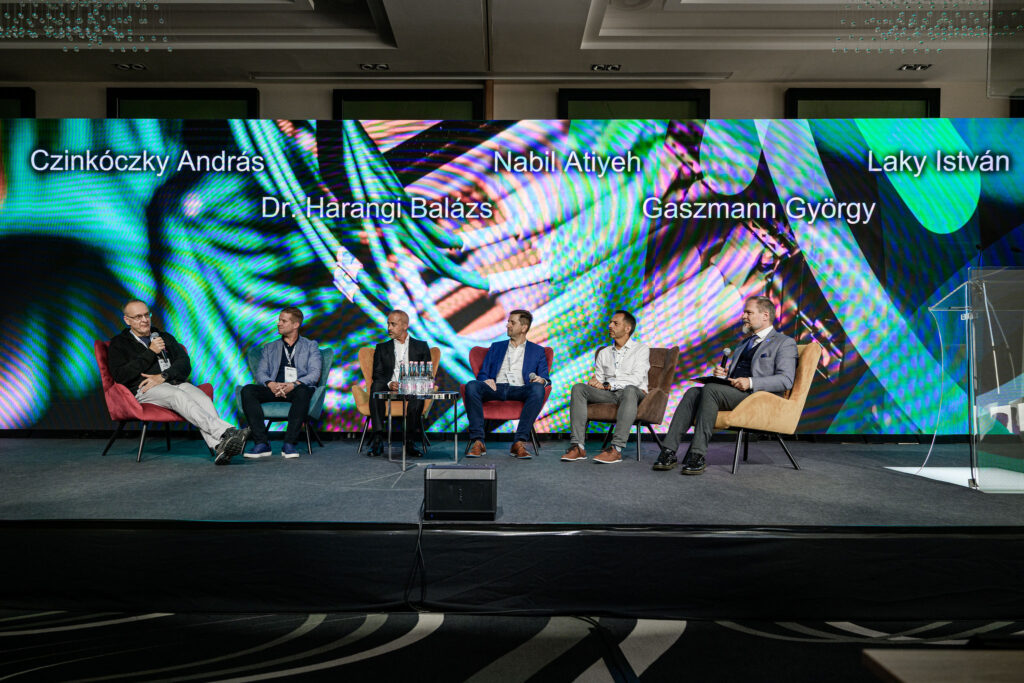
HUNOG’s first year was a novelty where a tight-knit professional community came together; the second year, an ambitious, growing conference; and this year, a confident professional milieu—so much so that many participants were strolling around in HUNOG T-shirts from previous years, and lively conversations filled the hotel. The organizers no longer just hope—they know—that they’ve brought the profession together (and perhaps even those adjacent to it). The goal will be the same next year at the fourth HUNOG conference, where all network builders are once again invited.

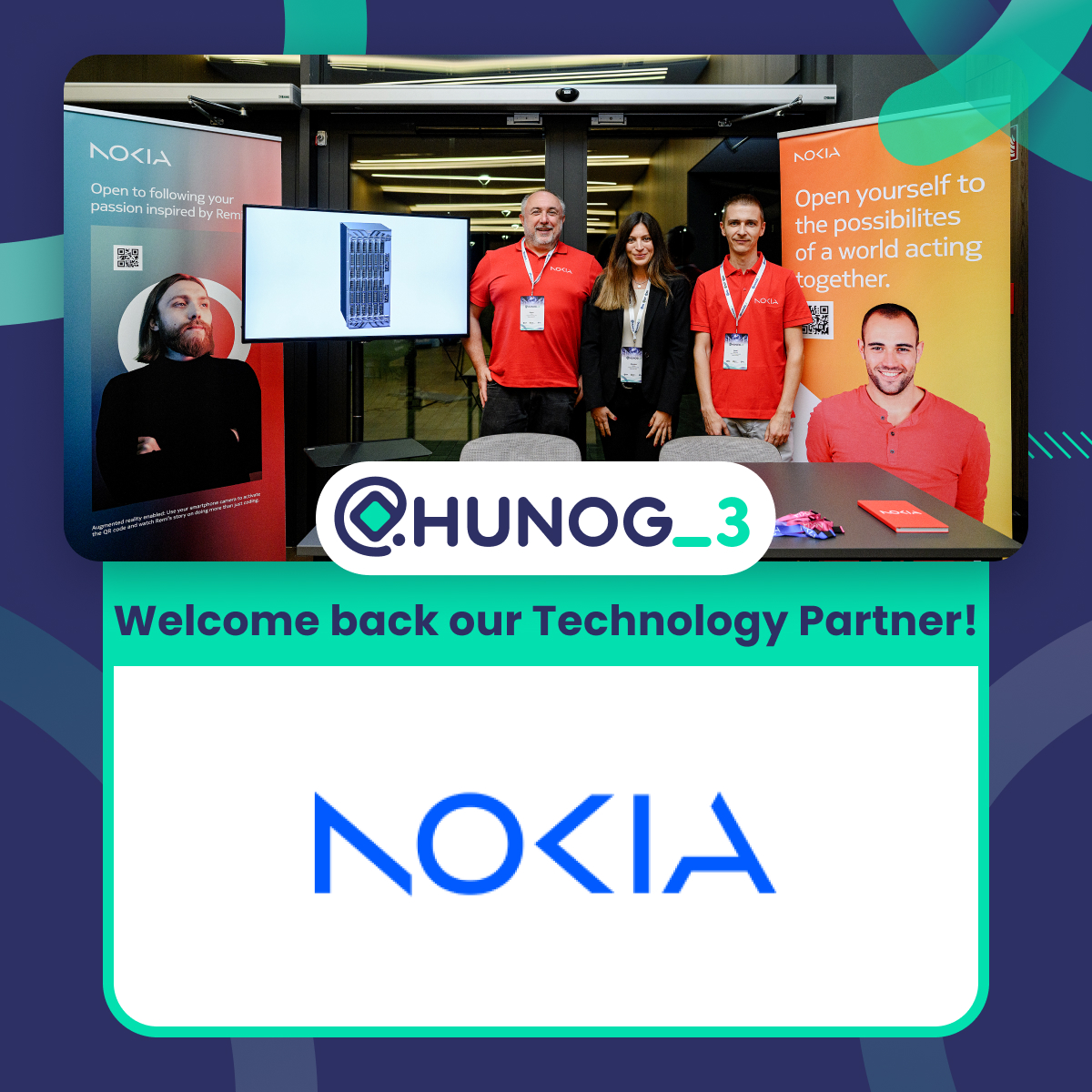
Barbara Angelus
ISZT Nonprofit Ltd. - Head of Marketing and Communications
+36 30 950 7815 – angelus.barbara@domain.hu
Kinga Gyulai
Goodevent Rendezvényszervező Ltd.
+36 30 345 2041 – gyulai.kinga@goodevent.hu